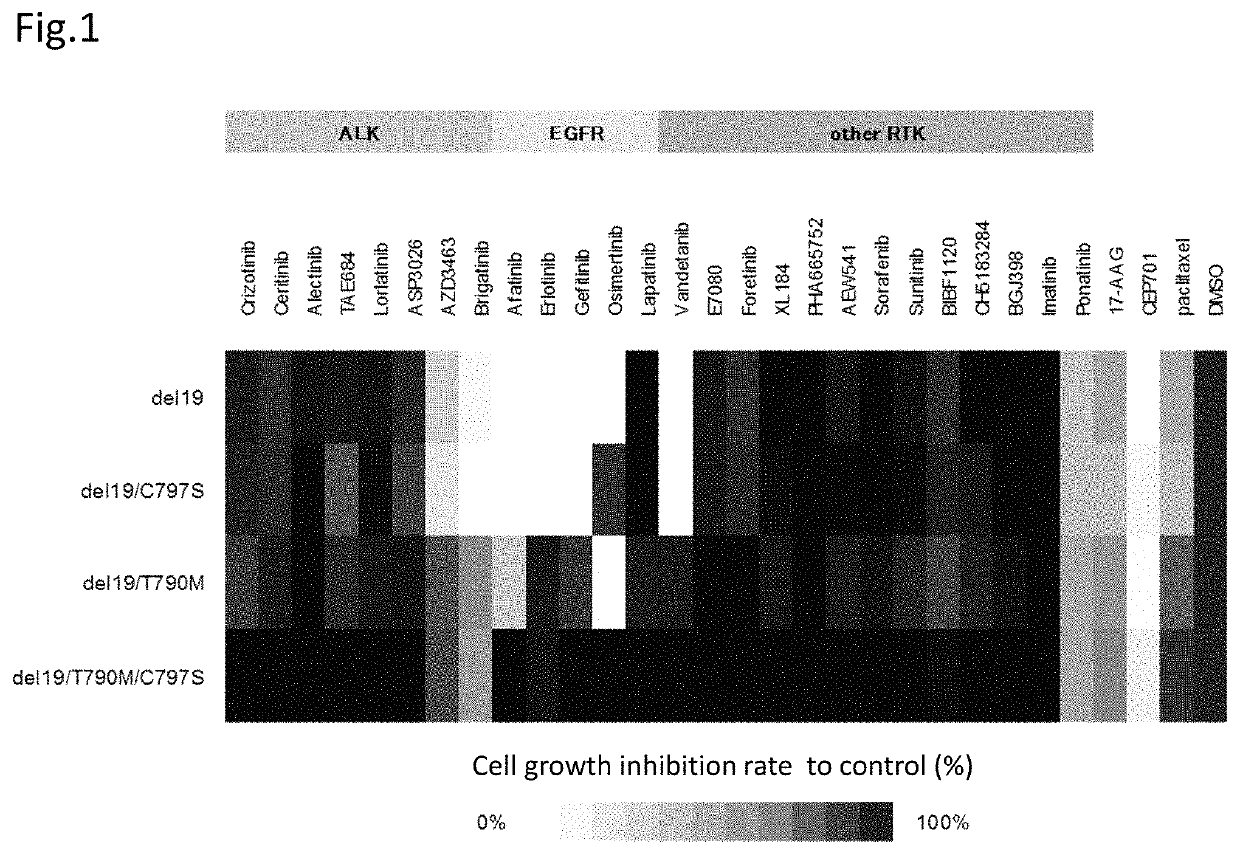Therapeutic agent for lung cancer that has acquired EGFR-TKI resistance
a technology of egfr-tki resistance and therapeutic agent, which is applied in the direction of biochemistry apparatus and processes, instruments, drug compositions, etc., can solve the problems of insufficient progress, serious problems in the development of therapeutic methods, and unclear true predictive factors of effectiveness, and achieve excellent therapeutic effects and stronger effects
- Summary
- Abstract
- Description
- Claims
- Application Information
AI Technical Summary
Benefits of technology
Problems solved by technology
Method used
Image
Examples
Embodiment Construction
[0118]Hereinafter, the compound providing an effect on a cancer which is a non-small cell lung cancer having a C797S point mutation and has acquired the resistance to a first generation EGFR-TKI represented by gefitinib and a third generation EGFR-TKI represented by osimertinib (AZD9291), a method for testing the efficacy of such a compound, and a method for treatment are described in reference to data.
[0119]The present inventors have found that an ALK inhibitor brigatinib induces the growth suppression on the cell having a point mutation of C797S which appears after the therapy with osimertinib. Focusing on that the cell which has acquired the resistance to osimertinib has the C797S mutation, the present inventors have screened a number of compounds using cell lines having both C797S and T790M mutations. As a result, the present inventors have found that ALK inhibitors represented by the following general formula suppress the cell growth.
[0120]
wherein R1 is a group represented by t...
PUM
| Property | Measurement | Unit |
|---|---|---|
| median survival time | aaaaa | aaaaa |
| median survival time | aaaaa | aaaaa |
| survival time | aaaaa | aaaaa |
Abstract
Description
Claims
Application Information
 Login to View More
Login to View More - R&D
- Intellectual Property
- Life Sciences
- Materials
- Tech Scout
- Unparalleled Data Quality
- Higher Quality Content
- 60% Fewer Hallucinations
Browse by: Latest US Patents, China's latest patents, Technical Efficacy Thesaurus, Application Domain, Technology Topic, Popular Technical Reports.
© 2025 PatSnap. All rights reserved.Legal|Privacy policy|Modern Slavery Act Transparency Statement|Sitemap|About US| Contact US: help@patsnap.com



